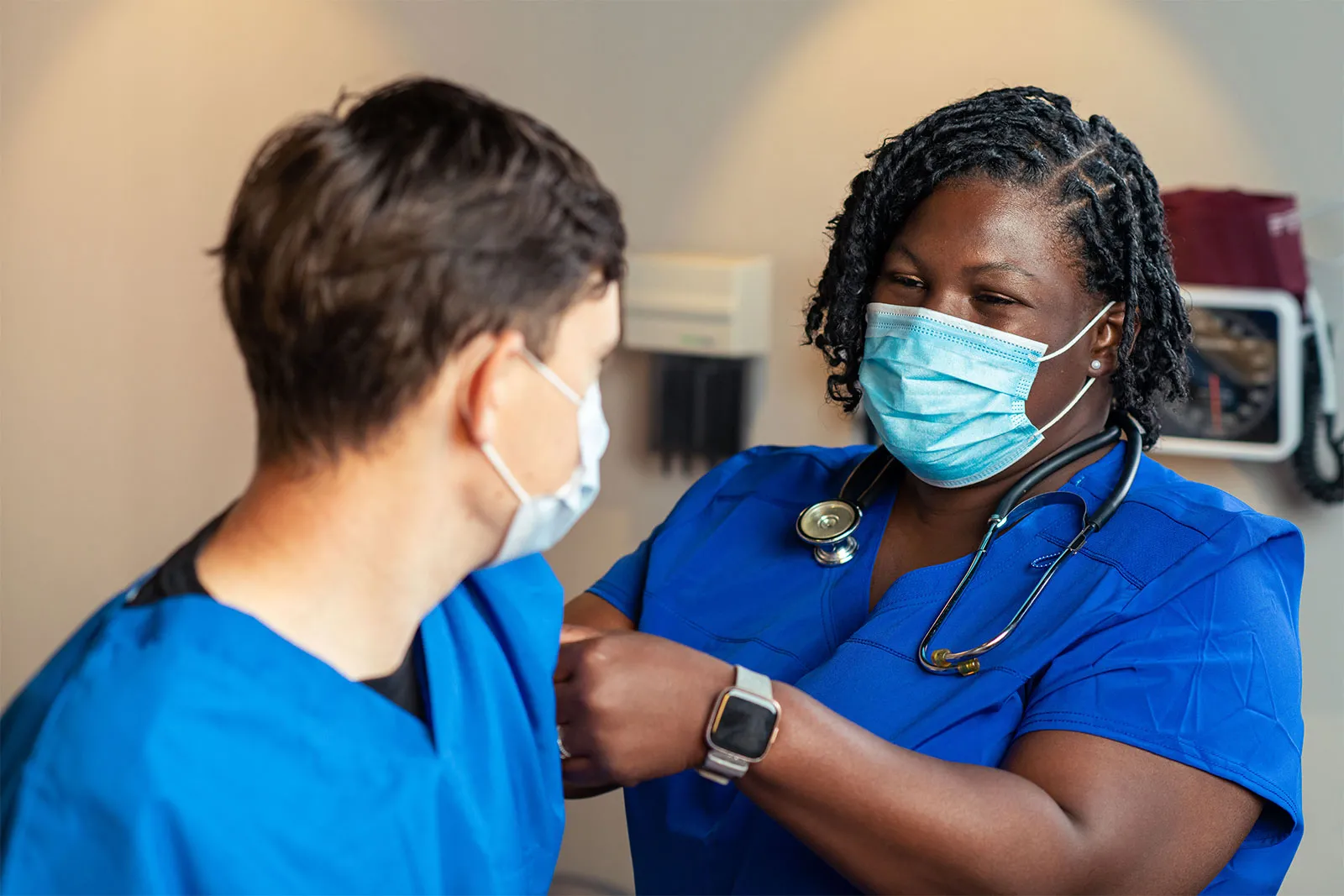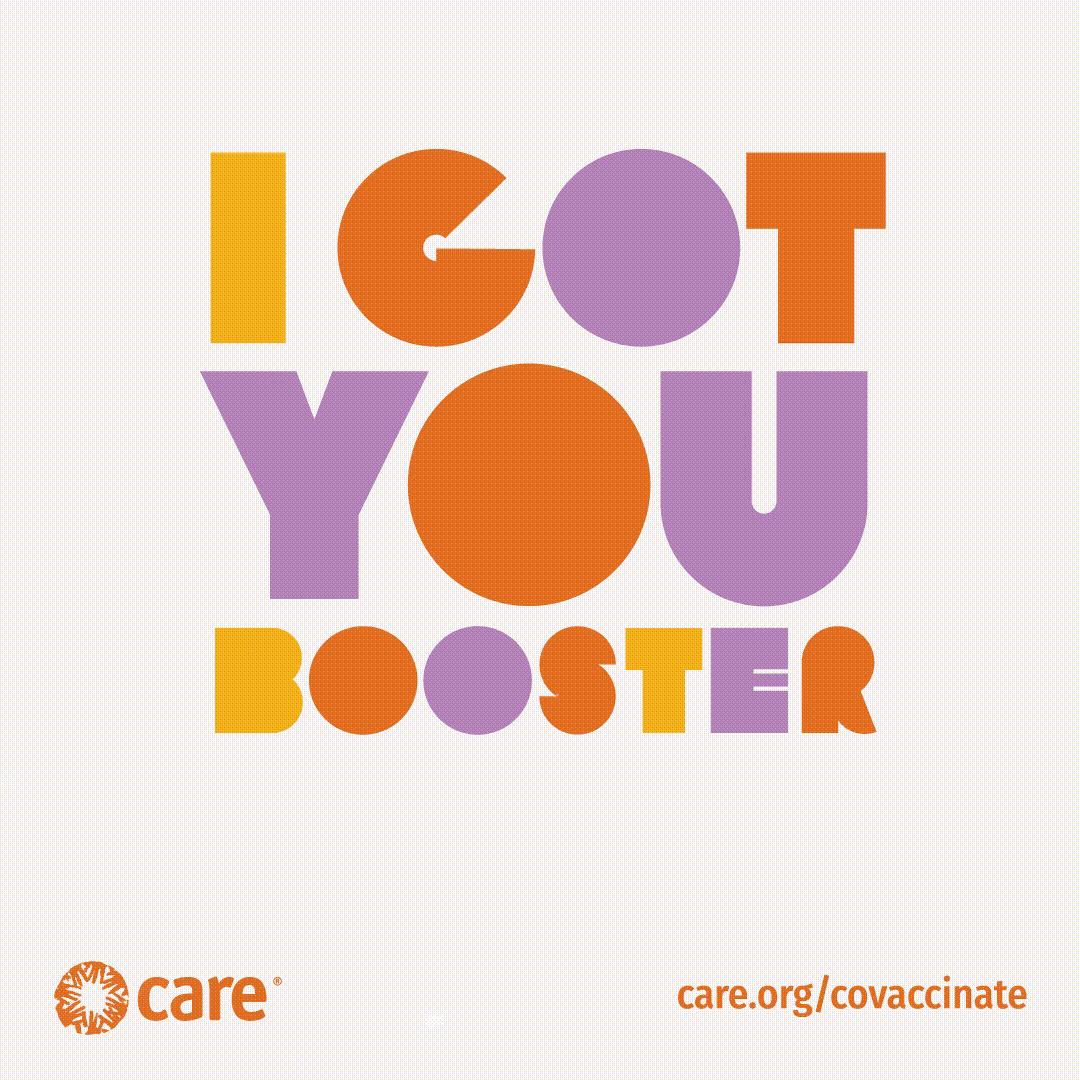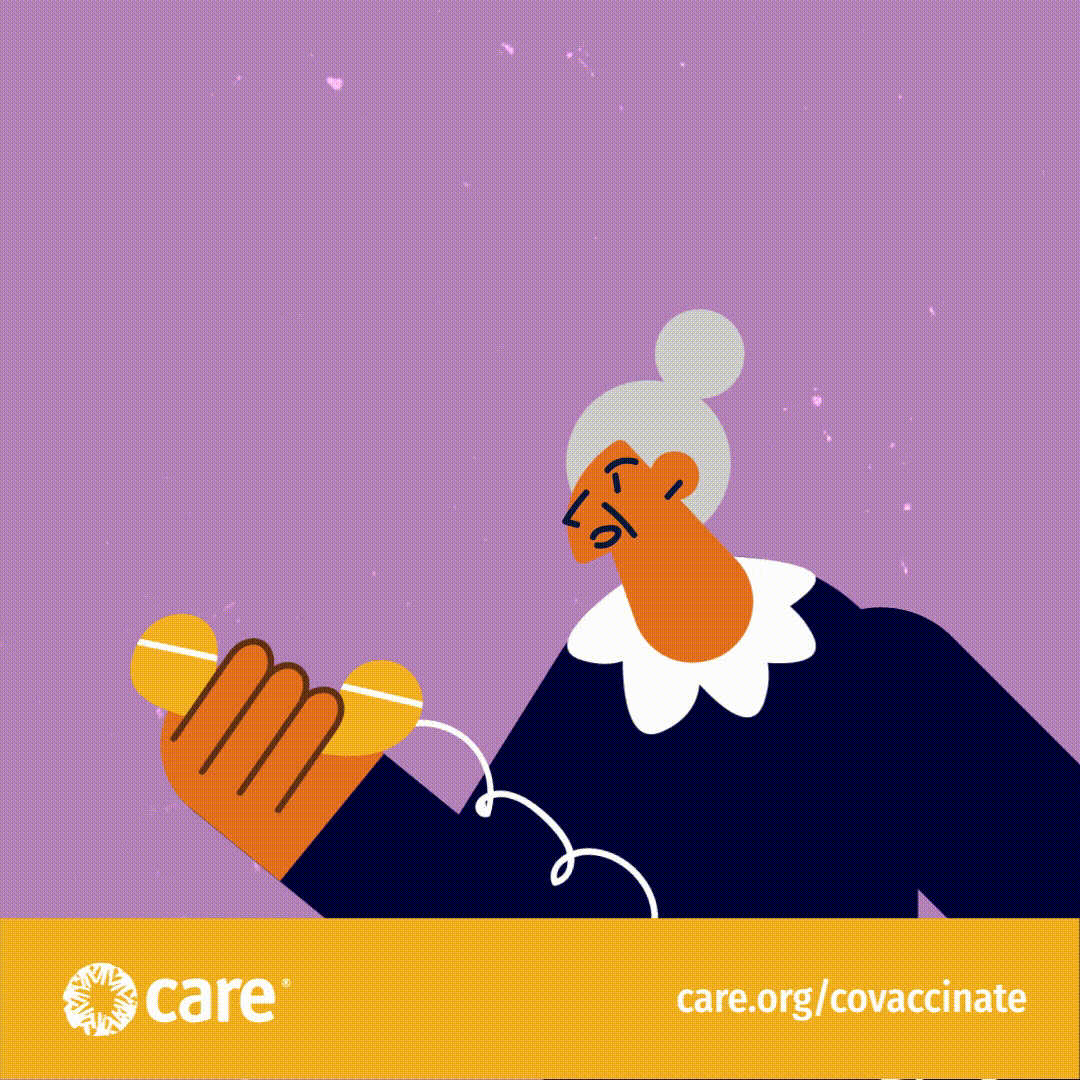Since 2021, CARE USA has run a number of social media campaigns that attempt to shift attitudes, knowledge, and behaviors related to COVID-19 vaccination. Testing ad series that featured personal stories, trusted messengers, and even faith leaders, CARE has explored several themes and communications strategies to encourage positive health behaviors.
During the summer of 2022, CARE USA was part of a global campaign series promoting COVID-19 preventive practices and vaccine confidence. From July 5 to August 2, CARE launched a series of video and static ads that encouraged people to get their COVID-19 booster shots. The goal was to promote the safety and importance of the vaccine – particularly among older Americans for whom the booster is most critical.
TL;DR summary
- Designing thumb-stopping and memorable creatives can drive people to take actions for health
- CARE was able to reproduce conversion rate similar to past campaigns, with this ad series generating 13,067 clicks to VaccineFinder.org (a website where enables people to book COVID vaccine appointments)
- Whether it was vaccine-fatigue or a creative strategy that didn’t sway our audience, this campaign did not see the expected lift in people’s perception of vaccine importance or safety
Creative
CARE USA’s summer campaign tested two main creative styles. The first used previously designed high-performing testimonials featuring CARE staff members sharing their experience and reasons for getting vaccinated.



